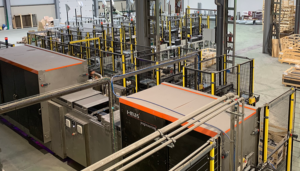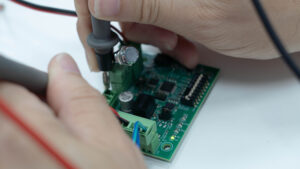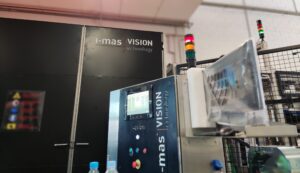Industrial traceability has traditionally been linked to the use of labels, QR codes, RFID or laser marking. These systems, although effective, have certain limitations: they require physical contact, can deteriorate over time or be manipulated, and require additional management in product design.
But what if it were possible to trace each part without relying on labels? With advances in machine vision and artificial intelligence algorithms, this possibility is already a reality.
The new label-free traceability: what is it?
Thanks to machine vision systems and deep learning, it is possible to identify and track parts by their own visual characteristics: shape, texture, surface finish, geometry or unique micro-defects that act as a “fingerprint” of each component. This visual traceability is based on training AI models capable of recognizing specific patterns of each part or batch, even when there is no visible marking.
This enables robust identification without the need for physical intervention, which is especially valuable in environments where labeling is impractical (e.g. parts subjected to high temperatures, contact with liquids or abrasive environments).
Advantages of machine vision over traditional systems
- Reduced human error: the risk of mislabeling a part or of the label becoming detached or damaged is eliminated.
- Zero maintenance: no tags to replace and no RFID devices to recalibrate.
- Security and authenticity: the pieces are identified by their physiognomy, reducing the possibility of counterfeiting.
- Full automation: machine vision is integrated directly into the production or inspection line.
Real applications of machine vision in industrial traceability
In the automotive industry, some manufacturers have already begun to integrate machine vision systems to identify and track mechanical components without the need for visible markings. Thanks to AI-trained models, they can follow the path of parts that change orientation, rotate or show slight surface variations due to the production process itself.
In the aerospace industry, where surface integrity of materials is critical, label-free traceability is being used to identify metallic or composite elements from natural microtextures of the manufacturing process, without adding markings that could compromise quality.
In the food industry, this technology makes it possible to identify packaging and products with irregular or sensitive finishes, avoiding physical contact that could alter the contents. Machine vision recognizes patterns in the shape or color of the packaging, associating them with the corresponding batch.
These cases demonstrate how visual traceability can be adapted to demanding industrial contexts, where traditional methods have limitations or are not viable at all.
Technical considerations for implementation
Although promising, this technology requires certain conditions to be effective:
- Controlled and consistent illumination to avoid reading errors.
- High-resolution industrial cameras, capable of capturing microscopic details.
- Specific training of the AI model with samples of actual production, ideally integrating constant feedback.
Collaboration between product design, quality and automation teams is key to deciding at which stages to integrate label-free traceability, and what information to extract.
Implementation of artificial vision for label-free traceability at I-MAS
In a context of increasingly automated and digital manufacturing, visual traceability represents a qualitative leap. It not only improves efficiency and reduces logistics costs, but also opens the door to new models of continuous inspection, predictive maintenance and non-contact quality control.
Machine vision, combined with AI, is making it possible to see what previously went unnoticed. And that vision is now a tangible competitive advantage for companies that want to stay one step ahead in the design and management of their production.
In the engineering department of I-MAS we are specialized in the combination of artificial vision technologies, deep learning and industrial automation in production processes, which allows us to offer integral solutions adapted to the specific needs of each client.
Want to learn more about our services? Contact us or visit our projects section!



